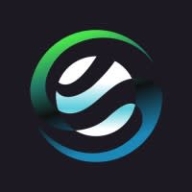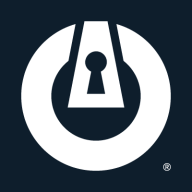

Morphisec and ThreatLocker compete in the cybersecurity software category, both offering specialized features for endpoint protection. Morphisec seems to have the upper hand due to its seamless integration with Microsoft Defender and ease of use for non-IT specialists, providing significant peace of mind.
Features: Morphisec integrates with Microsoft Defender, providing comprehensive visibility into security events through a unified dashboard and employs a deterministic approach to prevent zero-day attacks without needing prior knowledge or signatures. It is lightweight and operates silently without hindering endpoint performance. ThreatLocker's platform focuses on whitelist-based protection, emphasizing application control, ring-fencing, and selective elevation to secure endpoints and ensure application compliance with cybersecurity guidelines. It offers excellent support resources to enhance the user experience and features a robust admin approval process for application access.
Room for Improvement: Morphisec could improve customer interaction and alert clarity, as some users find it challenging to understand the protection level. Its reporting capabilities and network discovery features could be expanded. ThreatLocker faces comments about its steep learning curve, with users desiring a more intuitive interface and additional training resources. Challenges with policy application bandwidth management and better integration with PSA systems are noted.
Ease of Deployment and Customer Service: Both Morphisec and ThreatLocker offer on-premises, cloud, and hybrid deployment options, ensuring flexibility. Morphisec is praised for its customer service, although time zone differences with Israeli-based teams can pose challenges. ThreatLocker is known for high-quality support with quick responses, though more advanced queries and policy setup complexities sometimes require improvement.
Pricing and ROI: Morphisec is competitively priced, offering savings compared to solutions like CrowdStrike, with a straightforward pricing model. ThreatLocker is perceived as reasonably priced, providing a comprehensive feature set with flexibility in pricing. Both platforms report positive ROI, mainly through reduced security incidents and less administrative workload, enabling teams to focus on strategic tasks.
| Product | Market Share (%) |
|---|---|
| ThreatLocker Zero Trust Endpoint Protection Platform | 1.1% |
| Morphisec | 0.6% |
| Other | 98.3% |

| Company Size | Count |
|---|---|
| Small Business | 5 |
| Midsize Enterprise | 8 |
| Large Enterprise | 8 |
| Company Size | Count |
|---|---|
| Small Business | 32 |
| Midsize Enterprise | 4 |
| Large Enterprise | 3 |
Morphisec integrates seamlessly with platforms like Microsoft Defender, offering signatureless protection against zero-day threats and ransomware. It enhances existing endpoint solutions with minimal maintenance through its set-and-forget deployment, providing heightened security and reduced false positives.
Morphisec strengthens defense strategies by merging memory morphing and signatureless protection to effectively block zero-day attacks and ransomware. It operates efficiently within existing infrastructure, reducing system impact and maintenance needs. Users find its full visibility dashboard invaluable. Despite its strengths, cloud deployment and reporting features can be improved. Stability, alerts, and integration with other systems pose challenges for users, impacting usability and support quality.
What are Morphisec's key features?
What benefits should users consider in reviews?
In security-focused industries, Morphisec is crucial for protecting workstations and servers against sophisticated attacks like ransomware. Its signatureless technology offers early threat detection, while compatibility with existing systems ensures seamless integration, providing advanced protection without additional licensing costs.
ThreatLocker Zero Trust Endpoint Protection Platform empowers organizations with application control, selective elevation, and ring-fencing to enhance security and prevent unauthorized access.
ThreatLocker provides comprehensive security management using application allowlisting to ensure only approved software operates across servers and workstations. The platform's centralized management simplifies security processes by consolidating multiple tools, and its robust capabilities align with zero-trust strategies by actively blocking unauthorized applications and ensuring compliance. Users note intuitive features such as mobile access, helpful training resources, and responsive support, which effectively reduce operational costs and help desk inquiries. The managed service providers prefer ThreatLocker to maintain network integrity by preventing malicious scripts and unauthorized access attempts. However, users identify room for growth in training and support flexibility, the interface, and certain technical challenges like network saturation from policy updates.
What are the most important features?Organizations utilize ThreatLocker for application allowlisting, ensuring only authorized software operates to prevent unauthorized access efficiently. Deployed across servers and workstations, its features support zero-trust principles and are favored by managed service providers for application management and network integrity.
We monitor all Endpoint Protection Platform (EPP) reviews to prevent fraudulent reviews and keep review quality high. We do not post reviews by company employees or direct competitors. We validate each review for authenticity via cross-reference with LinkedIn, and personal follow-up with the reviewer when necessary.